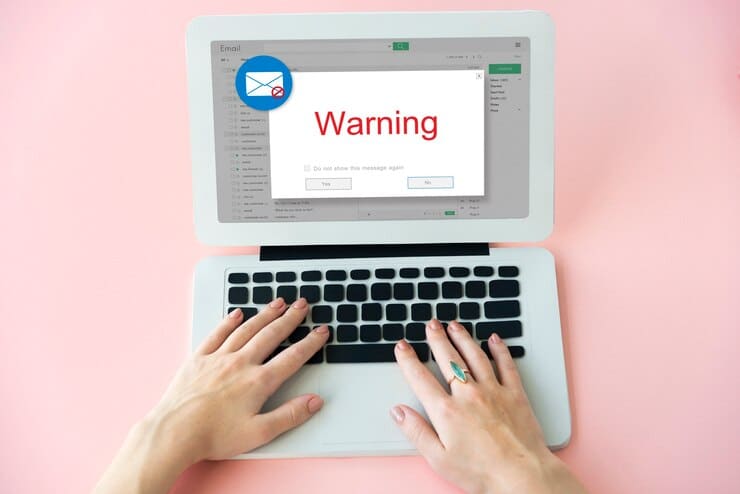Phishing emails are now an everyday occurrence and it is one of the downsides of the digital era. It has become a very pervasive threat and Yahoo users are not left out here. These messages can be harmful and their plan is to trick unsuspecting individuals into disclosing their sensitive information. As someone who has encountered a Yahoo phishing email, I will be showing you some of the ways I could recognize them, and some common examples that helped me avoid these scams. Knowing the strategies employed by cybercriminals is very important because this will help you to protect information as well as be safe while you use the internet.
Key Points
- Phishing is a type of online scam in which someone sends someone an email that looks like it came from a reputable company, like a bank, mortgage company, or internet service provider.
- Phishing emails have become commonplace in the modern digital age, and Yahoo users are among the most frequently targeted victims of these frauds.
- The goal of a phishing attack is to get the person who receives it to do what the attacker wants, like giving away private information like financial or system login credentials.
- By noticing the common signs of phishing attempts, such as urgent language as well as requests for personal data, you can prevent falling victim to these scams.
- When you enforce the best practices such as verifying the sender’s address, implementing two-step authentication, and ensuring your system’s software is updated, you are building a strong fortress against spammers.
By following this checklist, you can better protect yourself from phishing attempts and maintain a secure online presence.
What do I do with Yahoo phishing emails?
The Lamphills rule is to be safe while using the internet, and you must follow these steps to safeguard your personal information from getting into the wrong hands.
When you adhere to these rules, you can protect your personal information as well as help in the fight against phishing scams.
#1. Avoid Clicking Links or Open Attachments
Don’t tap on any links or open attachments in the email because they might carry malware or redirect you to harmful websites that were created to steal your data.
#2. Verify the Sender
Verify the sender’s information such as their email address very carefully. Funny enough phishing emails use addresses that look very much like the legit Yahoo address but when you pay close attention, you find that there are slight differences such as wrong spelling or it might include a number.
#3. Report the Email
Next, you must proceed to report the email and send it directly to Yahoo at phising@cc.yahoo-inc.com. This will enable Yahoo to carry out the necessary action against the senders of such emails.
#4. Mark such Emails as Spam
You’ll find the icon for spam in your Yahoo app, after locating it, proceed to mark such email as spam. By doing so, any email that looks like such will be moved to spam in the future.
#5. Rest you have Password
Another way to handle phishing emails is to reset your password. Reset your Yahoo account password immediately and to further tighten security, enable a two-step authentication.
#6. School Your
Make sure you are very familiar with common phishing methods as well as warning signals to enable you to recognize suspicious emails over time.
#7. Utilize Security Software
Make sure that your PC is very current as regards the latest antivirus software to enable you to identify and block malware.
Yahoo phishing email examples
As earlier stated, phishing emails are now a norm in this digital era and one of the most harassed persons are Yahoo subscribers who are always the recipient of such scams.
These harmful messages are designed to lure unsuspecting individuals into disclosing their sensitive information by pretending to be legitimate email platforms such as Yahoo. At this junction, I will be showing you some of the examples of Yahoo phishing emails I have noticed over time.
Common Examples of Yahoo Email Phishing
Yahoo phishing email(s) can come in various forms but outlined below are some of the most common examples I have discovered after carrying out extensive research and based on my experience.
#1. Fake Account Verification Email
What you will see as the subject of this email is ‘Urgent Action Required’. This creates a sense of urgency, prompting you to verify your account immediately. The body will then proceed to inform you that they noticed unusual activity on your account and they would love for you to verify your identity.
Contained in this email is a link prompting you to click below to protect your account. You will also see something like ‘Thank you for your prompt attention to this matter’ and at the end, you will also see from the Yahoo Security Team.
Furthermore, this email may contain the official-looking trademark of the company as well as language that tried to build a sense of urgency to lure subscribers into tapping on the link and providing their Yahoo information.
#2. Prize or Gift Scam
Another very common Yahoo phishing email is usually the prize or gift scam and at the subject of this mail you will see ‘ congratulations, you have won a gift from Yahoo. It will now proceed to notify you that you have won yourself a gift as a part of their special promotion.
You will be urged to act quickly to claim your gift, this message ends with yours sincerely, Yahoo Promotions Team. People who usually fall for this type of phishing email are those who long to receive something without doing anything. It will encourage you to click on the link which will then lead you to a phishing site.
These examples we just handled show how email phishing can clone legitimate communication via Yahoo and pry on people’s sense of urgency, fear, or promises of a prize to trick users into revealing sensitive information. You must always study such emails, check for signs of phishing, and also don’t click on suspicious links.
If you’ve ever wondered what to do when Yahoo! Mail stops working, the infographic below should help.

How does Yahoo contact you?
Yahoo will always reach out to their users using their email addresses most importantly if it has to do with sensitive information regarding account security or any promotional activities.
The sender’s email is always from a Yahoo domain such as security@yahoo.com. Furthermore, Yahoo might reach out to its users using notifications within its account dashboard when you sign in to your account. It is very important that you verify if the communication platform reaching out to you is legitimate and if it is from the real Yahoo company.
You can do this by going through the senders email address and checking the content for any indications of phishing. Also, be sure to take care with the links you click as well as the attachments you open.
How I Learned to Avoid Them
Over time there are ways I have discovered that have helped me in avoiding Yahoo phishing emails and I will be discussing some of them with you below. Let’s get started already.
#1. Identifying Red Flags
As time went on, I learned the common red flags that are a common feature of phishing emails such as urgent prompt notification, common greetings, and also suspicious links.
#2. Confirming the Sender
I also became familiar with checking the authenticity of the sender’s email address looking for hidden and subtle wrong spellings or additional characters.
#3. Reporting Suspicious Email
Another way to avoid phishing emails is to report such emails to Yahoo at phishing@cc.ushoo-inc.com. You can also mark such emails as spam thereby saving from interacting with such emails in the future.
#4. Increasing security
I also protect my account by using strong passwords, I ensure my password is also unique. I take a step forward by enabling two-step authentication as well as frequently updating my security settings.

image by rawpixel.com @freepik
What happens if you just open a phishing email?
If you opened a phishing email without clicking on the link or opening an attachment, the risk is modest.
Just downloading the attachment can result in your data being tracked and this could inform the scammers that you have an active email address.
These could lead to future attacks, therefore you should be cautious and avoid interacting with suspicious emails.
Do spammers know if you open their email?
Yes, of-course. I’ll show you how they’ll find out if you fell for their scam and how to protect yourself. I’ll be showing you how spammers monitor email openings.
#1. Tracking Pixels
These are tiny, small images usually 1×1 pixels contained in an email. They might be seeable or invisible to the receiver. So when you open an email, your email provider usually loads any included images as well as the tracking pixel.
The spammer’s server receives your IP address, device kind, and email opening time along with authorization to load this image.
This alerts the spammer that the email has been opened and provides your location and email provider.
#2. Custom Links
These are unique URLs developed by spammers for every receiver or for each email campaign. These links come with identifiers that are created specifically just for you or the email client.
When users tap on said links, the spammer server records the click verifying that you engaged with the email. This strategy can also monitor not just if you engaged with the link but also how you engaged with said link as well as how long you engaged with the site.
#3. Read Receipts
Read receipts are information sent back to the spammer when an email is opened. When you access an email with a read receipt permission, your email provider might just automatically transmit a message back to the spammer, notifying them that you have opened the email.
This feature is usually used in formal settings but it can be abused by spammers.
Conclusion
Identifying the common examples of Yahoo phishing emails and also understanding how to prevent them is very important for safeguarding your sensitive data and maintaining online security. By noticing the common signs of phishing attempts, such as urgent language as well as requests for personal data, you can prevent falling victim to these scams.
When you enforce the best practices such as verifying the sender’s address, implementing two-step authentication, and ensuring your system’s software is updated, you are building a strong fortress against spammers.
Through careful and informed actions, you can use your email with confidence and protect your digital presence against phishing attacks.






